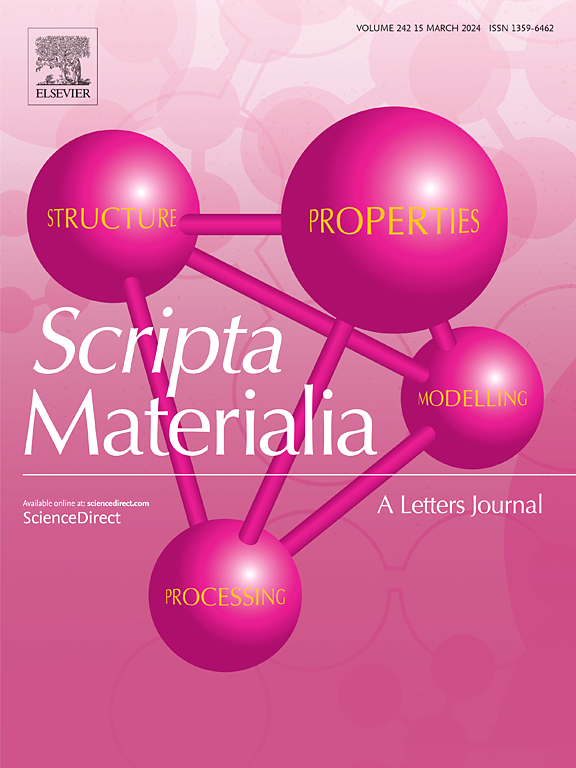再论Mg32(Al, Zn)49近似晶体中的氢俘获:化学无序的影响
IF 5.3
2区 材料科学
Q2 MATERIALS SCIENCE, MULTIDISCIPLINARY
引用次数: 0
摘要
近似晶体Mg32(Al, Zn)49 (Al -Zn- mg合金中的t相)以纳米析出相的形式存在时,具有提高铝合金强度和抗氢脆性能的潜力。我们以前的计算探索表明了强的氢俘获,但忽略了这种近似晶体固有的化学无序性。本研究重新审视了Mg32(Al, Zn)49中的氢捕获,直接包括通过特殊的准随机结构产生的化学紊乱。密度泛函理论计算表明,虽然化学无序引入了捕获能的变化,但强捕获的总体趋势仍然存在。由Mg原子配位的四面体位表现出特别强的捕获,由于Mg- h相互作用增强,较小的四面体体积与更强的捕获相关。还计算了这些位置的多个氢占用,从而产生高氢密度。利用热解吸光谱对Mg32(Al, Zn)49样品进行的实验验证证实了氢捕获,增强了该阶段设计先进的抗氢铝合金的潜力。本文章由计算机程序翻译,如有差异,请以英文原文为准。

Revisiting hydrogen trapping in Mg32(Al, Zn)49 approximant crystal: Influence of chemical disorder
The approximant crystal Mg32(Al, Zn)49 (T-phase in Al-Zn-Mg alloys) holds the potential for enhancing both strength and hydrogen embrittlement resistance in aluminum alloys when present as nano-precipitates. Our previous computational exploration indicated strong hydrogen trapping but neglected the inherent chemical disorder of this approximant crystal. This study revisits hydrogen trapping in Mg32(Al, Zn)49, directly including chemical disorder via special quasirandom structures. Density functional theory calculations reveal that, while chemical disorder introduces variations in trapping energies, the overall trend of strong trapping persists. Tetrahedral sites coordinated by Mg atoms exhibit particularly strong trapping, with smaller tetrahedral volumes correlating with stronger trapping due to enhanced Mg-H interactions. Multiple hydrogen occupation of these sites is also calculated, resulting in high hydrogen densities. Experimental validation using thermal desorption spectroscopy on a bulk Mg32(Al, Zn)49 sample confirms hydrogen trapping, reinforcing the potential of this phase for designing advanced, hydrogen-resistant aluminum alloys.
求助全文
通过发布文献求助,成功后即可免费获取论文全文。
去求助
来源期刊

Scripta Materialia
工程技术-材料科学:综合
CiteScore
11.40
自引率
5.00%
发文量
581
审稿时长
34 days
期刊介绍:
Scripta Materialia is a LETTERS journal of Acta Materialia, providing a forum for the rapid publication of short communications on the relationship between the structure and the properties of inorganic materials. The emphasis is on originality rather than incremental research. Short reports on the development of materials with novel or substantially improved properties are also welcomed. Emphasis is on either the functional or mechanical behavior of metals, ceramics and semiconductors at all length scales.
 求助内容:
求助内容: 应助结果提醒方式:
应助结果提醒方式:


